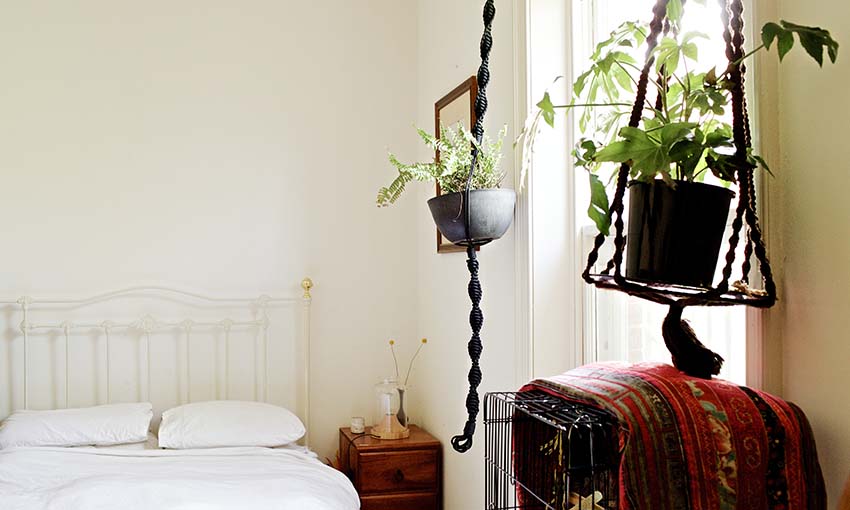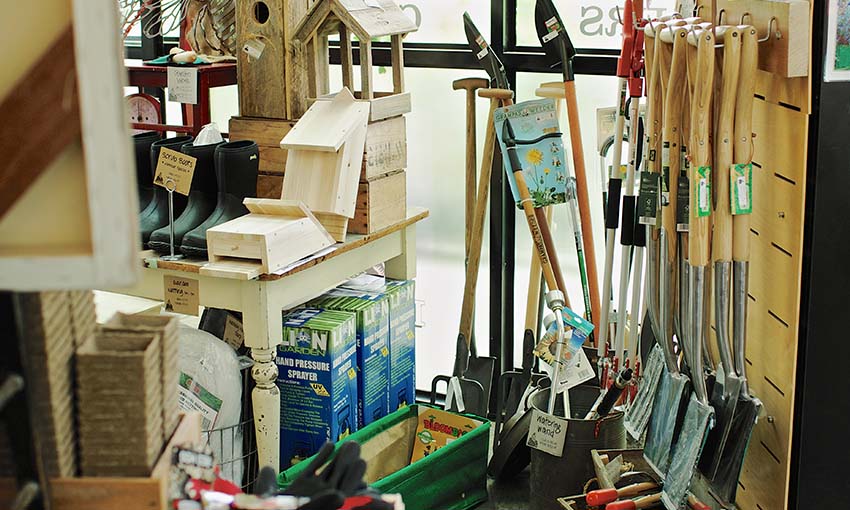Populating your home or office with green things will make it at least 400 per cent better, we guarantee. But not all of us are born with green thumbs, so CityMag asked some people who were for their top tips for keeping plants alive and happy.
How to… Indoor garden
With full knowledge of just how important it is to get a glimpse of green whilst living and working in the city, we checked in with three of Adelaide’s most-renowned green thumbs.
This is their advice on how to stop the endless cycle of buy new plants, kill new plants, buy more new plants from perpetuating itself in your home or office.
Diggers Shop
Adelaide Botanic Gardens
Nestled in the Botanic Gardens, The Diggers Shop is home to a range of heirloom vegetable and flower seeds that you won’t find at your common gardening retailer.
Heirloom varieties are “open-pollinated” – meaning unlike hybrids, they are pollinated naturally, stay true to their type and will grow as expected. They are also equipped to handle the Australian climate.
As well as stocking these varieties, Diggers also give great advice and sell tools and organic products to get you on the way to finally starting that veggie patch. Below are their hot tips:
Tip #1:
Plant seeds that are in season. Currently, many things are in season, but it’s a particularly good time for:
- Vegetables: Beans, lettuce, pumpkin, berries, hot peppers
- Herbs: Basil, cloves, parsley – such herbs will attract the right insects and will improve pollination if you grow them beside your vegetables
- Flowers: Marigold, sunflowers, Queen Anne Lace
Tip #2: Alternatives to the ever-trendy succulents:
- Flowers or plants that are drought tolerant such as Salvica Cottage Blue and Echinacea
Emma Sadie Thomson
www.emmasadiethomson.com.au
Emma grew up in a small town with a huge garden and, like many long time nature lovers, it’s a passion that’s been passed down from her elders, in this case, her father. Whilst studying landscape architecture at Adelaide University, she “found myself experimenting with different ideas in greenery design”. From there, her passion turned into a now very successful business.
EST is her online botanical wares store, where people with their own stylistic flair can purchase items to bring life into their homes. Emma also offers “interior styling specialising in greenery, focusing on incorporating nature into urban spaces”.
Her number one piece of advice for beginners is: “Don’t’ be scared. It is easy to be intimidated by the prospect of caring for plants if you have little or no experience, but you shouldn’t. Start small and remember, no plant will be able to survive without some love.”
Here is some more of Emma’s advice on what her plants of choice are, styling and care instructions.
Tip #1:Succulents and cacti are easy to care for and are low maintenance. Top picks for tougher plants are Peace Lily, Japanese Aralia, Ficus elastic (rubber plant) and Mother-in-law’s tongue.
Tip #2: Get creative with your styling. Air plants (see photo above) are a great idea. They look amazing and survive using moisture in the air, so you can move them easily around the home. No pot or soil needed!
Tip #3: Pot stands are making a big comeback. They are great as they add a beautiful focus to your space.
Tip #4: Visit Virginia Nursery on Gawler Road for an amazing plant selection.
Tip #5:Don’t pull the plug straight after a bath! Let your pot plants have a soak too. Plants love the opportunity to suck up lots of water and have a really good drink and it also stops the soil from getting too boggy.
Matt Huppatz

A lover of plants and an artist, Matt invited us to his home this week after we suggested he do so. Matt’s attraction to plants and gardening is simple – he loves new life. Gardening with his grandmother as a child cemented his love for it.
“Seeing things grow and starting new plants from a tiny piece of an established plant definitely got me started,” he says. It is hard to believe he began this garden in March as it is nothing short of a wonderful homage to nature that is well beyond the “establishment” phase.
Matt provides us with some excellent tips on how to create a garden big or small. Starting with some tough love that constitutes his major piece of advice – do your research!
Tip #1: Don’t over water or underwater; it has to be “just right”. The finger test is the best method: stick your finger into the potting mix and if it’s dry in the first two centimetres it probably needs a drink. Most plants won’t need water if the top of the mix is still damp.
Tip #2: Get some seaweed emulsion and a balanced slow release or liquid fertiliser. Plants thrive on this! Use it regularly but follow the instructions. If you’re using liquid fertiliser, just use half strength every couple of weeks. And take note, you might want to water outside, on a balcony or over a sink as the seaweed omits a not so pleasant odour.
Tip #3: Select plants for you home based on lighting. Matt has given us some plants suitable to certain lighting referenced by their botanical names.
Low light levels: Sanseveria, Aspidistra, Spathyphyllum, Philodendron, Syngonium, Peperomia, Palms.
Natural light/bright indirect sunlight: Nearly anything, ferns, hoyas, begonias, orchids, dracaena, and succulents.
Direct sunlight behind glass: Cacti and most succulents. (Be careful, especially in summer. East and South facing will be fine for most things. North and West facing can get too hot.)
Tip #4: When you’re first starting out, you don’t need to spend a lot on plants. Seek out garage sales and markets, or even look at GumTree. You will find more established plants that are guaranteed to thrive in South Australian climates.
Tip #5: Finally, the above tips are simply guides. People can achieve all sorts of things; it’s really just a matter of experimenting. Try a plant in a position for a month or so and see how it responds, you will see if it is happy when it puts on new growth or starts flowering. If it seems to decline, move it to another position. Almost all plants will grow better in bright indirect sunlight, even if they can survive in low light areas, so keep that in mind.















